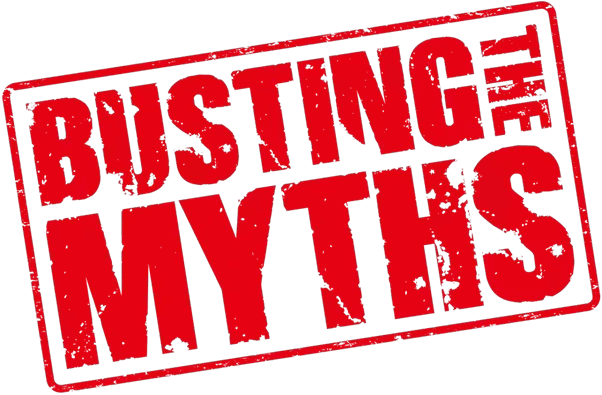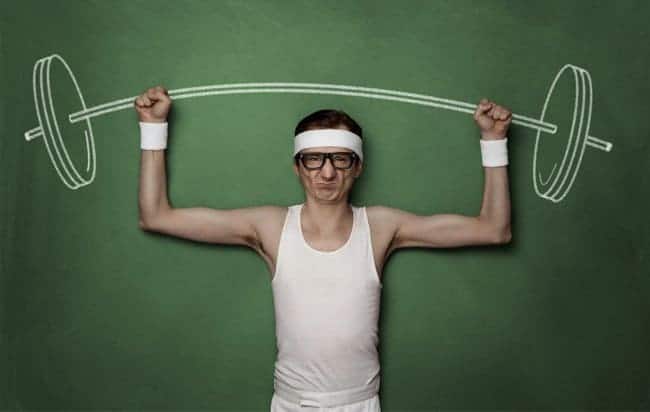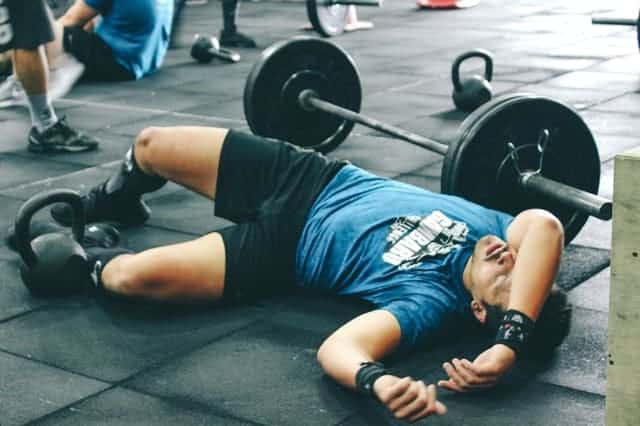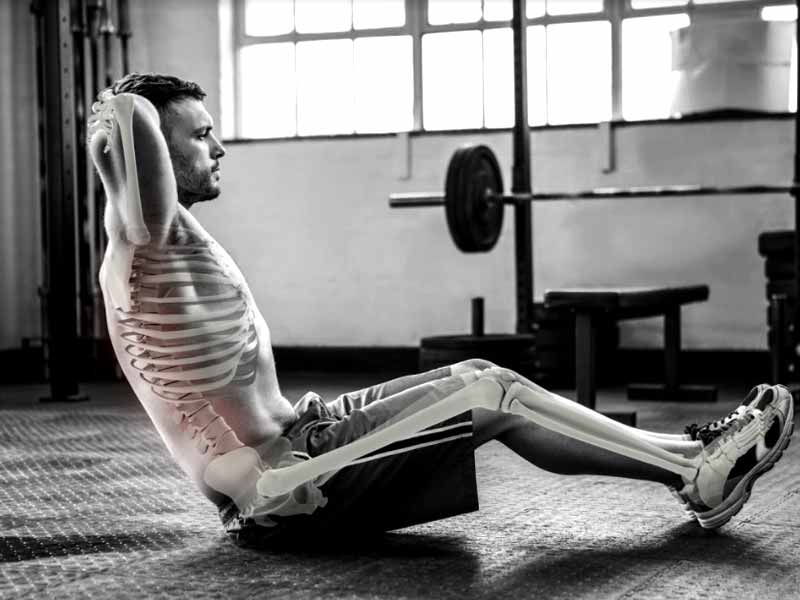Short it down and the truth is that there are really only two reasons we workout: to be healthier and fit or to look better naked and shirtless (and also in clothing, assuming your wardrobe fits perfectly). Commonly speaking, more workouts, for the most part, directly convert to more of both. It’s not actually rocketed science. Well, regardless of what you consider or believe, it kind of is. Between self-styled “gurus”, fitness bloggers and Instagram influencers there’s a veritable and factual treasure trove of info out there and not all of it is accurate and right.
A little less known fact that you should always end your workout with cardio, or that “spot training” is a complete package and utter absurdity. And that’s not all! We will show you some of the most important high-profile exercise myths that have broken into our cultural consciousness and infused to this day.

The world of fitness is filled with misperceptions and myths. Many of these myths prevail because of the way fitness is interpreted in the media and social networking sites; other misperceptions thwart the test of time because there’s a lot of monetary value behind them. The fitness industry is alone a multi-billion dollar business for people, after all.
For every three fitness and workout truths, there’s a lie and a myth continuing from a long time, and sometimes it’s hard to actuate which is which (especially when it’s something coming on from so long time and many of us have just assumed and accepted for as long as we can remember).
Generally, the advice you’ll hear from one or two persons may contravene and repudiate the advice you’ll hear from someone else and this can be quite gloomy and discouraging at times. Do you also think that walking and jogging doesn’t count as exercise or workout? Do you also believe that workout doesn’t work for you? You’ve come to the right destination for a solution and hereby I present to you some of the workout myths that are not true but appear to be. Here are the realities behind some common workout myths.
So, VoguenYog now presents workout myths that just need to come to an end. Letting go of these workouts myths and misconceptions will help you get faster, healthier, stronger, more powerful and better. Flexon my friends, flex on. Let’s take a look at some deceiving workout myths and then the realities.
Do you also think that walking and jogging doesn’t count as exercise or workout? Do you also believe that workout doesn’t work for you? You’ve come to the right destination for a solution and hereby I present to you some of the myths that are not true but appear to be. Here are the realities behind some common workout myths. So, VoguenYog now presents workout myths that just need to come to an end. Letting go of these workouts myths and misconceptions will help you get faster, healthier, stronger, more powerful and better. Flexon my friends, flex on. Let’s take a look at some deceiving myths and then the realities.
Table of Contents
Protein intake must be increased when starting strength training

The actual recommendations of proteins for your body are 0.8g of protein intake per kg of body weight each day. Looking at top level athletes working out and breaking the sweat over for 20 hours a week, the recommendation for them is 2g per kg body weight each day, while those who exercise less than 5hours per week does not require more than 1g per kg body weight each day. The research was conducted and there was no proven effect on increased muscle mass at an intake of 3-4g per kg body weight each day.
Therefore, the need for proteins and necessary proteins should be covered by a varied and healthy diet in most people. The myth and misconceptions about the dairy products are that they have a lot of calcium is very outdated and obsolete. However, there are definitely many other foods that are filled with calcium and some most necessary nutrients such as sesame seeds, spinach, and broccoli which are a great substitution for dairy products that aren’t always as healthy and rich as we used to believe. Also, a protein bar is processed and packaged food that requires fewer calories to digest, so it’s less useful. Protein bars can only act as a snack but not a substitution or you can swap it for oatmeal.
Strength training will make you bulk up and muscular

This is one slowly fading away, but some people still believe it. This is a common exception to weight training. The simple truth is that lifting heavy weights is not going to make you muscular and bulky unless you make a big and specific nutritional push and spend a lot of time in the room lifting heavyweights. If it was as simple as lifting heavy weights for a few months would make you look big and muscular, then why are so many people in the gym breaking their sweat, people who believe this and are lifting ‘heavy’ weights why haven’t they become huge like the incredible hulk? I’m sure masses of people wish it were as easy as picking up some heavyweights and ‘BOOM’ they suddenly they became more muscular and big.
The hormonal conditions are very necessary for attaining large amounts of muscle mass that aren’t present in most of us. It’s pretty hard for women to bulk up from a usual strength training and workout routine because they don’t have as much testosterone as men, actually, the difference in this hormone level makes men more prone to bulking up and getting muscular. In fact, some part of the truth is that if you are looking for weight loss as your goal, lifting heavy weights can actually help you lean out, but you have to keep your nutrition intake in check, too. Simply managing lean muscle mass requires higher energy and efforts. So, the leaner you are, your body will burn more calories at rest.
You can focus on losing fat from certain body parts by spot training

Spot-training is actually not a thing. Fat cells are distributed across your entire body. If you want to lose fat from a precise spot, you need to lose comprehensive and overall body fat. High-intensity interval training can work miracles for you. After an intense and sweating workout, your body needs to inhale oxygen at a higher rate to help it return to its normal resting state. This procedure requires the body to work harder, which results in burning more calories in the process. Assimilating strength training can help you hit your goals easily and faster, since having leaner muscle which will burn your body fat and more calories at rest. One more thing, specific strength training of the belly does not trim and burn the belly fat. The fat on the stomach is trimmed only through a higher level of energy consumption than energy intake. This is done through plenty of physical activity and most importantly, a good diet.
If you’re not sore the day after training, you didn’t work hard enough

If being sore the next day from the gym is how you rate the level of quality of your workouts then there is a small tip; Do something completely off the table each time you go to the gym, use unreasonably slow tempos when lowering the weights and perform at least 80 reps on at least twelve exercises. You might not be able to walk or climb up the stairs the next day and I assure you that you will be sore, unable to train or even do light workout for the next four days because of this soreness and useless showoff but I guess that’s good for progress, right? While workout intensity and soreness are sometimes connected, how tired your muscles are or how sore they are isn’t always a good indicator of a solid sweat productive session.
Being sore doesn’t actually mean it was a great workout, it just means that a momentous and compelling amount of stress was applied to the tissue. You can have a great workout session and not be sore the next day. Proper recovery will help prevent the pain of the muscles. Refuel within the first 35 to 40 minutes post-exercise, get enough sleep and stay hydrated all of these things can help minimize soreness and boost recovery. Muscles can be exercised without being sore or aching afterward. You, therefore, do not have to have a goal of being in pain after every workout session. I request you not to do the above.
Physical activity or workout provides stronger skeletons

The truth is weight-bearing training such as aerobics, jogging, alpinism, strength training, dancing, etc., has a good and healthy effect on bone structure. Maximum bone mass is gained by the age of 20-30, and it will be profitable and favorable to have, at a young age, done varied exercises and exercised a lot to build as strong a bone mass as possible. After the age of 30 and specifically after menopause for women, it is important to sustain the training to counter the bone mass decomposition.
ALSO READ:
Foods to boost your liver health
Simple Yoga Asanas To Reduce Belly Fat

